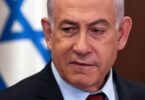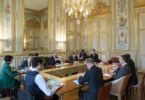Dr. Diana Galeeva
Russian Prime Minister Mikhail Mishustin this month noted that the Russian economy “has adjusted to the current challenges and shows fairly stable growth.” The country’s economy, he stressed, reached positive values in all key indicators in the first half of the year. According to the Ministry of Economics, Russia’s gross domestic product grew by 1.5 percent in the first six months of 2023; in the second quarter, the growth was 4.6 percent. Industrial production in the country for the first six months increased by 2.5 percent, due mainly to manufacturing, where growth exceeded 6 percent.
Russian President Vladimir Putin said at the end of July that the growth rate of the Russian economy this year was accelerating from month to month, on which basis the growth for 2023 will completely cover last year’s decline. The authorities are counting on growth of more than 2 percent by the end of the year, the head of state noted.
The central bank last month raised its forecast for Russia’s GDP growth from 1.5 percent to 2.5 percent from 0.5 percent to 2 percent in the spring forecast. The forecast was made taking into account new data on the dynamics of economic activity in the baseline scenario. According to the forecast, the GDP growth rate will be between 0.5 percent and 2.5 percent in 2024 and between 1 percent and 2 percent in 2025. What is happening within the Russian economy to generate these figures, and what measures are being taken by the government to adapt to the severe and ongoing Western sanctions?
According to the World Bank’s initial forecast of the impact of sanctions, announced in March 2022, by the end of that year it was expected that Russia’s GDP would be 11 percent lower, investment flows would decrease by up to 17 percent, inflation would reach 22 percent and exports and imports would fall by up to 31 percent and 35 percent, respectively. However, the figures were revised down and the World Bank later estimated a fall in GDP of only 4.5 percent in 2022 and inflation of up to 13.9 percent. Meanwhile, the International Monetary Fund estimated a real GDP decline of up to 3.4 percent in 2022, but it also revised this to only 2.1 percent. Among the key explanations for this was the Kremlin’s policy of energy weaponization to counteract the sanctions. Russia’s economic prospects heavily rely on what happens to its oil and gas exports and on the extent to which the country can find new export markets and new suppliers of essential imports, while reducing its reliance on Western supply chains. As outlined in a statement by Deputy Prime Minister Alexander Novak, revenues from the oil and gas industry increased by 28 percent in 2022. This was not only due to a rise in prices on the world market, but also a 2 percent increase in oil production in Russia and a 7 percent increase in oil exports, despite the imposition of sanctions.
It is not coincidental that the recent measures rely on both the energy market and close coordination with the Central Bank of Russia. The bank’s management, which played an essential role in tackling the economic restrictions due to the Ukraine war, believes that the only way to maintain the validity of the budget rule is to change the taxation of the oil and gas sector.
This is stated in the draft Monetary Policy Guidelines for 2024-2026, which was developed by the regulator of the bank. According to the central bank, an important factor in planning budget policy in the medium term will be “the risks of exhausting the liquid part of the National Wealth Fund and the stability of the current budget rule.” The bank admits the possibility of maintaining oil and gas revenues below the baseline for necessary income, even in the event of a moderate weakening of the ruble. In this regard, the only way to maintain the budget rule would be what the regulator called “adjustment of taxation parameters in the oil and gas sector.”
A further factor was under discussion last week as, according to The Financial Times, the central bank announced after an emergency interest rate-setting meeting that took place on Aug. 14 that it had raised its key rate by 3.5 percentage points to stem a sharp sell-off of the ruble. The Wall Street Journal put it that “economists see this week’s currency gyrations not as the beginning of a financial crisis but rather as a symptom of the Kremlin’s sclerotic economic prospects.” Mishustin aims to maintain the pace of economic growth primarily by developing the supply side of the economy, ensuring domestic demand for domestic goods and services. These measures are intended to increase employment, improve the efficiency of the economy and promote investment activity.
Among the ongoing challenges relating to attracting foreign investments is that most are pegged to the US dollar by potential investors. In the current reality, this particularly affects the players from the Middle East, which conduct their sales of energy resources in that currency. It is not a coincidence that Russia has been working on de-dollarization policies, especially since 2014, seeking partner states that are willing to liberate themselves from the dollar’s dominance.
While Russian presentations of the economy’s development are largely positive and stress its resilience in the face of global restrictions, Western reporting has pointed to how sanctions have at least placed a speed limit on Russia’s economy. Although the results of Western pressure have not matched the negative forecasts mentioned above, the overall picture is mixed enough to warrant further observation. The continued positive growth stands against the backdrop of a cautious jumbo interest rate rise and the concerningly low level of the ruble against the dollar.







